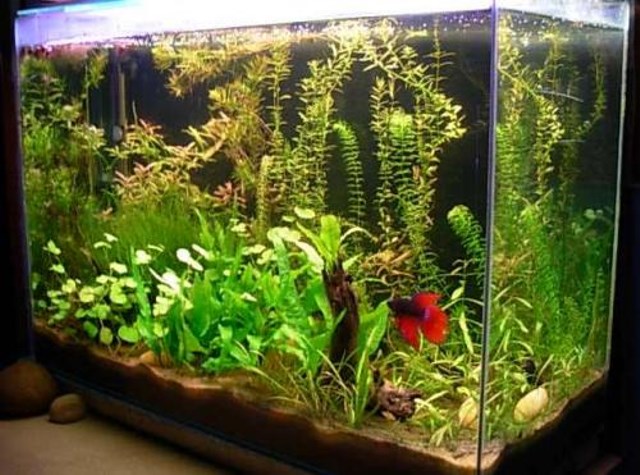The greatest attraction that aquariums have, apart from their fish, is their vegetation, with which we give an impressive beauty and a better finish so that they are more admired by us. However, a certain biological balance must be made with the needs of aquatic plants and fish, so that there can be a small autonomous aquatic society between them and you can make a good aquarium.

If anomalies arise that are considered a lesser evil, do not worry that it is not possible to create perfection in terms of nature itself, one of the main objectives of placing plants in an aquarium is to avoid that the water becomes contaminated quickly, helping to keep the water clean and detoxified.
And you wonder how this is achieved?
With an adequate collaboration of light, which helps to assimilate the carbon dioxide released by the fish in their breathing, being dissolved in the heart of the water where they are, avoiding the formation of a higher concentration of compounds that are lethal. for these living beings and in turn provide the vital and essential oxygen.
Therefore, plants not only play a beautifying role but also have a vital need to provide a biological function in an exclusive way.
Conditions for its development.
You have to get the plants to adapt to the environment they are exposed to, making them develop in the aquarium, but to achieve this it is necessary to take into account certain factors that may affect their growth. Such growth factors can be reflected in this way without forgetting that any unilateral excess will be useless if we stop taking into account a single existing factor to govern the development of the vegetable being.
Natural light, there are plants such as the water rose need strong natural lighting. In this case, it is necessary to orient the aquarium towards a window where sunlight reaches it, preferably at noon. But for reasons of aesthetics and decoration it is not recommended since it disharmony the room and we must not forget cloudy days. And especially in the winter season that requires the use of electric lighting.
For artificial lighting recommended for aquariums or fish tanks. Only normal lamps or fluorescent tubes are used if they are large fish tanks. But if they are small aquariums for technical reasons, the use of 25 to 60 watt bulbs is required.
Things to keep in mind.
- The water must be previously analyzed depending on the natural and climatic conditions that are found. For example, rainwater is very low in density because it is poor in calcareous salts and scarce in containing minerals, almost considered as distilled water. Therefore, a tropical water that is softer than one degree greater between 8 or 12 of hardness is recommended. These instruments can be obtained in stores. Some plants prefer slightly acidic water with a pH of 6 to 8; and if adequate water is not available. You can choose to drink tap water mixing it with rainwater until you reach the desired degree of hardness.
- You have to take into account the stones and sand or gravel to use. It is advisable to wash them with soap and water before rinsing them sufficiently to make sure that they will not detach calcaneous residues.
- The soil must be prepared with a thickness of 5 to 7 cm, which is equivalent to 5 parts of sand. 1 clay, 1 softened peat and one covered with washed sand with a thickness of 2cm.
- Its temperature should be between 22 and 38°C, although it is not harmful if it drops a little from time to time.
The 7 marine plants to make an aquarium.
Aquarium-philia can be practiced today by anyone who feels the need to create a beautiful environment, with color and movements that make up the fish that urge you to relax your eyes and release everyday stress, visualizing your aquarium with colored plants. Bright green and exotic personalities motivate millions of people to cultivate this custom in their homes. The plants that we recommend are appropriate for beginners and that do not require extreme care since they are resistant to the environment that will expose them, these are:
- Anubias barteri var. Barteri or broadleaf Anubias.
- Ceratophyllum demersum or fox tail.
- Vesicularia dubyana or java moss.
- Microsorum pteropus or java fern.
- Echinodorus parviflorus or black echinodorus.
- Egeria densa or elodea densa.
- Vallisneria spiralis or narrow valisneria.
So cheer up!!! You can set up your aquarium in your home as a true work of art.
